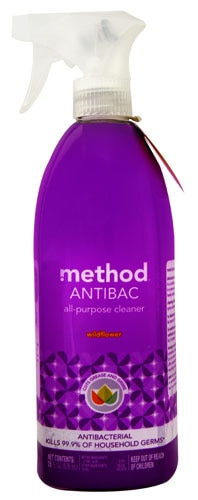What’s the deal with dusting? Is it really necessary? How often should you do it? What are the best tools to use? As you're getting ready to tackle your spring cleaning, read this guide for answers to all these questions and more!
Dusting Basics
In addition to the dirt and debris you track inside your home, dust is composed of fabric fibers, pet dander and human skin cells. And did we mention dust mite excrement?
So yes, as tedious as it may be, the chore is absolutely necessary for quite a few reasons. For starters, dust can make your abode appear dirty (remember: dust mite excrement!). It can also scratch and damage your household surfaces. Finally, dust can impact those with breathing problems and allergies.
Experts recommend dusting your furniture and electronics on a weekly basis to help prevent buildup that can dirty and damage your home. Remote spots, such as corners, baseboards, ceilings (don’t forget ceiling fans!) and door frames, should be dusted as necessary—typically once every few months.
If, however, you (or a member of your household) suffer from allergies, you probably want to dust electronics and furniture at least twice a week and door frames, ceilings, baseboards and corners every other week at minimum.
Reducing Dust
Following are some simple ways to help cut down on the amount of dust in your home:
- Keep your windows closed. This helps block dust from entering your abode. It’s also a good idea to check the weatherstripping around your windows and doors annually and replace it as needed.
- Use door mats. Place door mats inside and outside every entrance to your home. This helps keep dirt, debris and dust at bay. Be sure to wipe down or vacuum the mats regularly.
- Brush and bathe your pet(s). Brushing your pet not only provides an opportunity to bond with your furry family member, it helps reduce shedding and rids their coat of dander that could have otherwise clogged the corners of your home. Regular baths are also a must!
- Change your air filters. In addition to reducing dust and improving air quality in your home, changing your air filters every one to three months can extend the life of your A/C unit (because it won’t have to work so hard to cool your living space) and reduce your monthly energy bills.
- Go easy on the polish. Improper or overuse of furniture polish can cause surfaces to become cloudy and dusty. Always follow the directions on the product packaging.
The Best Way to Dust - Tips & Tricks
Dust in a top to bottom motion to avoid wiping the same surfaces repeatedly. Always begin with dry dusting and follow up with wet dusting, if necessary. If you wet dust, be sure to remove even small amounts of leftover water from wood surfaces because they can cause staining, warping or other damage.
Vacuuming is an efficient way to eliminate dust from household surfaces. And you are probably familiar with feather dusters, electrostatic dusters, microfiber cloths and mops with disposable duster attachments. But following are some surprising tools that may help send dirt and debris packing:
- Dryer Sheets. A less expensive alternative to electrostatic dusters, these can be used to remove dust from TV, computer and phone screens.
- Baby wipes. Shake off your computer keyboard and then use these to rid it of any remaining dirt and debris.
- Fabric gloves. These are perfect for removing dust from delicate items, such as those made of glass and porcelain.
- Natural bristle paintbrushes. These are especially effective for removing dust from chandeliers, wicker baskets and furniture, and window screens.
- Socks. Slip these over your hands and gently remove dust from window blinds.
- Toothpicks. Use these to remove dirt and dust from small cracks and crevices in your home.




